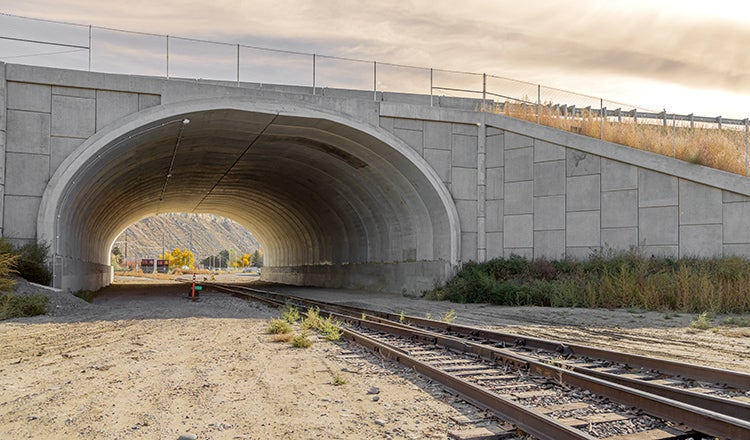I-90 Yellowstone River Bridges Replacement

I-90 Yellowstone River Bridges Replacement
Enhancing Capacity and Reliability for a Heavily Traveled Corridor in Montana
- Design of additional traffic lanes and wider shoulders expands capacity and improves driver safety
- Internal road widening lessens right of way impacts
- New concrete median barriers enable differing elevations on two sides of traffic and improve safety
- Innovative concrete pour sequence reduces deck construction duration to meet tight timeline
- Phased construction schedule maintains traffic and reduces winter driving disruptions
For over 60 years, the Interstate 90 Yellowstone River Bridges served as a key connection for people on the east side of Montana’s largest city. Over time, their age and increasing traffic in Billings led to a need for change. A 2012 study called for new bridges and the overhaul of I-90 through the urban corridor to improve capacity and safety for drivers.
As the Montana Department of Transportation’s (MDT) lead design consultant, HDR was pivotal in managing the $71 million project — the largest infrastructure program in Montana history at the time. The project replaced the bridges, added a third lane in each direction, widened shoulders and replaced a bridge over a busy railroad line.
Alongside MDT, our team balanced the expansion with site constraints and construction challenges. An alternatives analysis recommended a phased construction approach that optimized constructability, maintained traffic, and minimized impacts to the river, railroad and surrounding cultural areas. We also provided structure design, performed hydraulic analysis of the Yellowstone River, completed environmental documentation and led the traffic analysis to upgrade this critical corridor.
Phased Construction Delivery
Montana’s short construction season and severe winter weather were key considerations in developing a constructable design and creating the project’s phased construction schedule. Construction was compressed between April 15 and November 15 for two consecutive years, with bridge and road widening completed in one direction each year. Restoring regular traffic flow during winter shutdown periods was critical to avoid risky crossover maneuvers for drivers in poor weather conditions. This required detailed a traffic analysis to guide development of sequencing plans which also allowed for year-round traffic to be maintained.
An expedited construction schedule required our team to develop innovative solutions to keep the project on track and on budget. When cast-in-place deck construction was chosen for the bridges, we worked with MDT and the contractor to quickly develop a concrete sequencing plan that would meet the aggressive schedule by using larger and fewer concrete pours. Along with an approved mix design that delayed setting, our plan allowed the contractor to efficiently place large sections of deck and avoid multiple intermittent curing times.
Internal Road Expansion
To expand capacity, the project added a third lane to the interstate in each direction throughout the 2.3-mile corridor. But the alternatives analysis identified significant risks to expanding the interstate outward, requiring more right of way. Instead, we worked with MDT to expand the roadway to the inside into what had been a median. In addition to avoiding right of way impacts, this solution avoided disruption to existing irrigation and oil lines. It also prevented the need to take land from a nearby park and culturally significant recreation area, reducing costs to MDT and boosting public support of the project.
Replacing the median is a new cast-in-place concrete barrier — the first of its kind in Montana. In addition to serving as a safety barrier, it also acts as a retaining wall to accommodate differing elevations on the eastbound and westbound roadways. Its increased height compared to the typical median barrier and provides added safety by reducing headlight glare from oncoming traffic.
Resilient Railroad Crossing
The project also included replacement of the existing interstate bridges over the Talen Energy railroad spur. Rather than replacing the previous structures with new bridges, a review of the options by MDT and our team led to a decision to install a prefabricated concrete arch under the road and over the track. The new structure eliminated the need for a new bridge deck — which is more susceptible to ice in winter and requires periodic maintenance — and reduced the needed roadway grade increase.

The rail line transports necessary chemicals to the city of Billings water plant to treat drinking water, and the timing for installation of the precast arch was important to maintain operations at the water plant. Daily train traffic was maintained as the arch was pieced together and associated earthwork completed over two construction seasons.
The I-90 Yellowstone River Bridges and 2.3 miles of expanded roadway were completed and fully reopened to traffic on schedule — and within budget — in July 2024.








